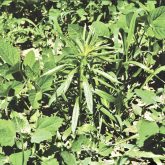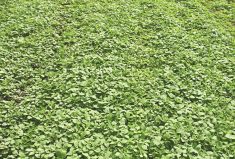It’s a saying commonly used by advocates who would like to see more tillage used for weed control: “No herbicide resistance can evolve to cold hard steel.”
I’m not here to discount the value of tillage for weed control, but this implies that tillage is foolproof. Although tillage can do a reasonably good job at controlling Canada fleabane, one should not expect 100 per cent control. In many ways, factors that reduce the performance of herbicides also contribute to reduced effectiveness of tillage, including weed size, population density, and environmental conditions at the time of the tillage pass.
Read Also

Producers aren’t panicking over tariffs and trade threats
The influence of tariff and trade uncertainity on farm business decisions.
With Drs. Clarence Swanton and François Tardif, we have investigated different approaches to control glyphosate-resistant Canada fleabane. Here is what we have learned from working with Ontario grain farmers.
Vertical tillage tools are pretty effective at removing the large majority of Canada fleabane seedlings but there are usually survivors and often at levels that would warrant other methods of control.
Small seedlings (about one inch in diameter) are easiest to control, but if there is a high population density, their collective root mass can hold on to soil and survive, even in sandy soil (see Figure 1 at top).
Once fleabane rosettes get beyond four inches in diameter, they have already developed a root system that is pretty good at holding on to soil, making for a resilient plant.
Large, bolted plants that were aggressively tilled and appeared to be “dead stalks” were able to sprout new growth, flower and set seed (Figure 2 below).

Weed wicking (Figure 3 below) dicamba and 2,4-D injured bolting Canada fleabane but the injured plants ultimately produced viable seed (Figure 4 at bottom).

If you are looking at RR2 Xtend (dicamba and glyphosate-resistant) soybeans to solve your Canada fleabane woes, it would be of value to use tillage for partial control of this weed so that you aren’t relying exclusively on dicamba to manage it.
Have a question you want answered? Hashtag #PestPatrol on Twitter to @cowbrough or email Mike at [email protected].
















